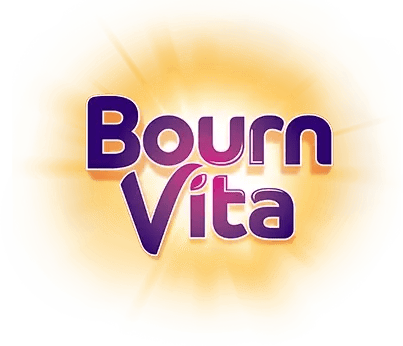- Moong Dal (Yellow Split Lentils)
- Ragi (Finger Millet)
- Ghee (Clarified Butter)
- Seasonal Fruits
- Paneer (Cottage Cheese)
- Vegetable Paratha
- Curd (Dahi)
Introduction

A child’s body and brain need the right fuel, and the foundation often starts at the dining table. In India, where food traditions are deeply rooted in culture and regional variety, choosing the right nutrition for kids can be a fun and thoughtful process. From ghee-roasted rotis to seasonal fruits and homemade dals, every bite can be tailored to a child’s age and developmental needs.
Whether your child is a toddler learning to chew or a schoolgoer balancing studies and play, the proper Indian diet can provide them with balanced energy, immune support, and mental focus. Nutritional needs change as children grow. Toddlers need iron and healthy fats, while teens require more protein, calcium, and brain-healthy foods. With homemade meals that mix cereals, pulses, vegetables, and dairy, Indian kitchens already have a treasure trove of balanced options.
Small changes like using jaggery instead of refined sugar, traditional millets instead of white rice, or introducing fermented foods can make a big difference. Simple meals like khichdi, idli, or vegetable paratha can be comforting and nourishing and support your child’s daily health without the fuss. A well-planned, age-appropriate diet can significantly impact not only physical well-being but also attention span, emotional balance, and overall growth.
7 Best Nutrition Foods for Kids: Indian Diet Plan Ideas for Every Age

A healthy diet plays a huge role in your child’s energy levels, immunity, brain development, and overall mood. The great thing is, you don’t need fancy or fortified foods to build strong nutritional habits. Indian kitchens are packed with wholesome ingredients that are not only tasty but also meet the evolving needs of growing children. Whether your child is just starting school or entering their teenage years, the right combination of grains, pulses, dairy, and seasonal produce can provide them with the strength and focus they need every day.
These simple Indian foods are rich in natural nutrients, easy to digest, and can be adjusted to suit any age. From toddlers who need healthy fats for brain development to older kids who require more calcium and protein for strong bones, these traditional ingredients support your child’s health through every stage.
Moong Dal (Yellow Split Lentils)
According to a study published in Nutrients. 2019, moong dal is one of the best sources of plant-based protein for children. It’s light on the stomach, making it ideal for toddlers and younger kids. This lentil is rich in iron, folate, and B vitamins, which support your child’s brain function and energy levels. Serve it as dal with rice, moong dal khichdi with vegetables, or moong dal cheela for a protein-rich start to the day.
Ragi (Finger Millet)
According to the Indian Institute of Millets Research, Ragi is a powerhouse of nutrients, especially calcium and iron, both essential for strong bones and healthy blood. It’s perfect for children who may not like milk or need dairy alternatives. You can use ragi flour to make porridge, dosa, or soft rotis. It also helps improve digestion and keeps kids fuller for longer.
Ghee (Clarified Butter)
As per a study published in J Ayurveda Integr Med. 2024, homemade ghee is rich in healthy fats that support brain development and nutrient absorption. It also adds warmth and lubrication to the body, making it ideal for children during growth spurts. A little ghee on dal-chawal, roti, or khichdi enhances both taste and nutrition. Just remember — moderation is key.
Seasonal Fruits
According to the Dietary Guidelines for Indians, Indian seasonal fruits, such as banana, mango, chikoo, papaya, guava, and pomegranate, offer natural sweetness and are rich in fiber, vitamin C, and antioxidants. These fruits help improve digestion, boost immunity, and keep your child hydrated. You can offer kids fruits as a simple evening snack, such as homemade fruit chaat or a delicious and refreshing smoothie.
Paneer (Cottage Cheese)
According to the FSSAI, Paneer is a fresh dairy product rich in protein, calcium, and healthy fats. It strengthens bones, supports tooth development, and helps in muscle building, especially during the teenage years. Serve it as a side dish, in sandwiches, parathas, or lightly sautéed with veggies for a balanced meal.
Vegetable Paratha
Parathas are a great way to include multiple vegetables in one meal. When stuffed with spinach, carrots, methi, or even grated bottle gourd, they become a tasty and nutrient-rich option. Research done by Nutr Rev.2012, suggests these parathas offer fiber, iron, and vitamins while being filling and easy to eat. Serve with curd or a small cube of ghee to complete the meal.
Curd (Dahi)
Research conducted by Foods. 2022, states curd is an excellent source of calcium and probiotics, which support bone strength and a healthy digestive system. It helps improve your child’s appetite and keeps their tummy calm, especially during hot weather or when recovering from illness. Serve plain curd, make raita, or mix with fruits for a fun twist.
Conclusion

You don’t need fancy or foreign foods to give your child the best nutrition. Every day, Indian staples such as lentils, dairy products, fruits, and grains provide all the essential nutrients necessary for balanced growth. By using what’s local, seasonal, and fresh, you’re building healthy eating habits that stay for life. These simple additions to your child’s daily meals can go a long way in improving focus, strength, and overall well-being — one wholesome plate at a time.
Her love for storytelling began with reading her grandfather’s speeches, where Tarishi saw the power of words in creating lasting memories. Combining her passions for food and writing, she has turned her life into a fulfilling path of sharing stories that celebrate flavours and how food brings communities together.
The views expressed are that of the expert alone.
The information provided in this content is for informational purposes only and should not be considered a substitute for professional medical advice, diagnosis, or treatment. Always seek the advice of your physician or another qualified healthcare provider before making any significant changes to your diet, exercise, or medication routines.
References
https://pmc.ncbi.nlm.nih.gov/articles/PMC9455928/
https://pmc.ncbi.nlm.nih.gov/articles/PMC3146027/
https://www.nin.res.in/dietaryguidelines/pdfjs/locale/DGI24thJune2024fin.pdf
https://pmc.ncbi.nlm.nih.gov/articles/PMC10789628/
https://millets.res.in/m_recipes/Nutritional_health_benefits_millets.pdf
















